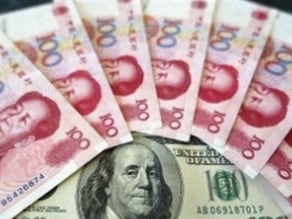1. Price Competition
Price competition is a factor that can significantly affect product quality in China. When a new product appears on the market, prices for that product may be high but are generally more easily accepted by customers. At this point, only a few suppliers are developing and manufacturing this new product, so they likely have some pricing power. But as you may already know, China's cloning technology is unsurpassed throughout the world. Typically, there would be a number of potential suppliers and various counterfeits appearing within a year or two of market entry. It’s at this point that the original product ceases to be novel, market share becomes divided and a price war ensues. Each supplier has all kinds of ways to retain customers. The most direct way is price-cutting. As soon as prices are reduced, profits soon follow, and vendors and manufacturers will seek to maintain earlier margins. Naturally, these affected parties will look for ways to cut costs in the manufacturing process. The customer ends up receiving substandard goods made with inferior materials, or goods that are damaged during shipping because of an inadequate packaging or rough packing method. In short, price competition is often an indirect cause of lower product quality.
2. Cost of Raw Materials
The cost of raw materials used in manufacturing has a direct effect not only on product quality in China, but elsewhere as well. Customers tend to shop around before placing an initial order with any particular supplier. All things being equal, it's a successful transaction when they are able to find high quality products purchased at a low price. We cannot deny that such transactions do occur in the market, but it’s infrequently the case.
 The day may come when you are told by your vendor or manufacturer that the unit price of your next order will be a little higher than before, due to an increase in the cost of raw materials. So how might you react? Actually, most customers may be unhappy and unwilling to agree to that newly-increased price. If you are like them, you should be prepared for the possible disappointment that comes with receiving substandard products because raw materials are one of the factors that impact your product quality.
The day may come when you are told by your vendor or manufacturer that the unit price of your next order will be a little higher than before, due to an increase in the cost of raw materials. So how might you react? Actually, most customers may be unhappy and unwilling to agree to that newly-increased price. If you are like them, you should be prepared for the possible disappointment that comes with receiving substandard products because raw materials are one of the factors that impact your product quality.
Due to intense competition, products are usually sold to clients at little profit. Instead, suppliers often earn profit from the Value-Added Tax (VAT) rebate. The export VAT rates vary from 0 to 17 percent, depending on the product, and the exporter can sometimes recover part of their tax incurred on goods by means of a refund. When the price of raw materials has risen, there is no change to the VAT rate, and the vendor may add to the unit price of exported products. If suppliers choose not to raise unit prices, they may choose other inferior materials instead of those specified. Although the appearance of these products may be comparable to those manufactured with high-quality materials, the quality may have dipped significantly. Thus, the saying goes, “yi fen qian, yi fen huo (一分钱,一分货)” or “you get what you pay for”.
3. RMB Appreciation
When we're talking about product quality in China, RMB appreciation is a major consideration. Since the year 1994, China’s national currency has experienced nearly continuous growth in value against the US dollar, resulting in an increasingly lower exchange rate. For example, in 1994 the same RMB that was trading at a rate of 8.62 yuan to 1 USD now trades at a little more than 6 yuan to 1 USD. Experts predict this trend will continue.
Currency appreciation should lead to price inflation, including rising costs in raw materials. Naturally, this increase in the cost of raw materials would be passed on to the purchaser in the form of an increase in unit price. In this case, a supplier might attempt to cut production costs on all sides, and the price war and use of inferior materials would follow. Once again, the customer would not be able to guarantee product quality.
There are two potential causes for RMB appreciation:
a. Internal factors
Changes in exchange rate of the currency are largely due to internal factors. One such factor is Real Effective Exchange Rate (REER) – the weighted average of a country’s currency relative to an index of other major currencies. A second factor is Purchasing Power Parity (PPP), a method for determining currency values based on what can be purchased with an equivalent value of money in one country or another. The Balance of Payments (BoP) is a record of all economic transactions between residents of one country and the rest of the world and represents a third internal factor contributing to appreciation of the RMB.
b. External factors
External factors can also play a part in currency appreciation. In 2002, Japan’s Minister of Finance submitted a motion in the Organization for Economic Co-operation and Development (OECD) to address RMB appreciation and restore international trade balance. Since 2003, the U.S. government has put added pressure on the Chinese government to continue the appreciation of the nation’s currency through monetary policy. These external forces from foreign governments have been catalysts for change in the exchange rate of the RMB.

Conclusion
Buyers must keep in mind that products bought at a low price may not satisfy quality standards. It is crucial to take care in choosing a supplier when manufacturing a product. Also note that when comparable products are available from multiple suppliers at different prices, buyers should pay close attention to the raw materials. For the most part, any variation in materials is proportional to a variation in price, followed closely by link in quality. So when you are told of an increase in unit price from a supplier, you should think twice about going to another supplier that’s offering a much lower price. After all, you cannot guarantee product quality until you’ve received the finished goods.






